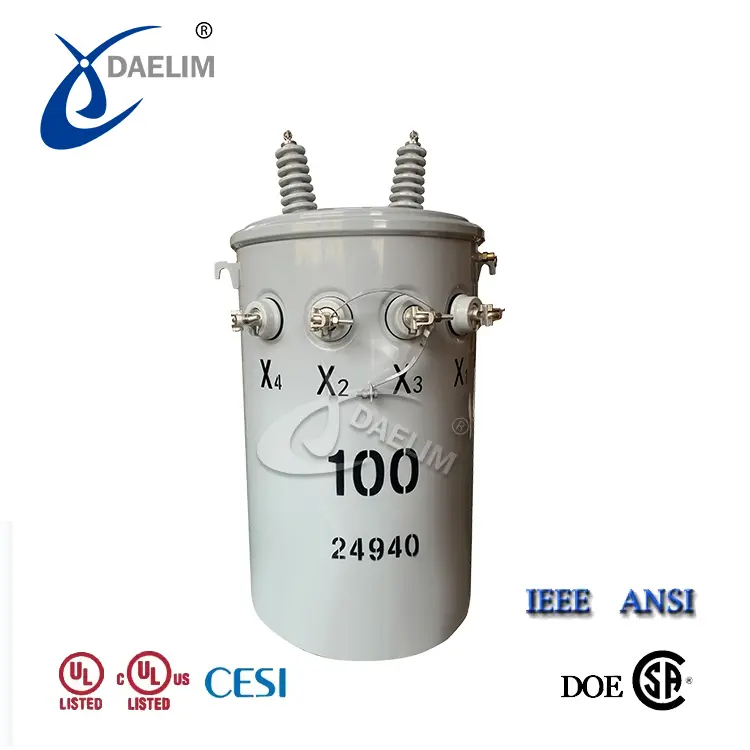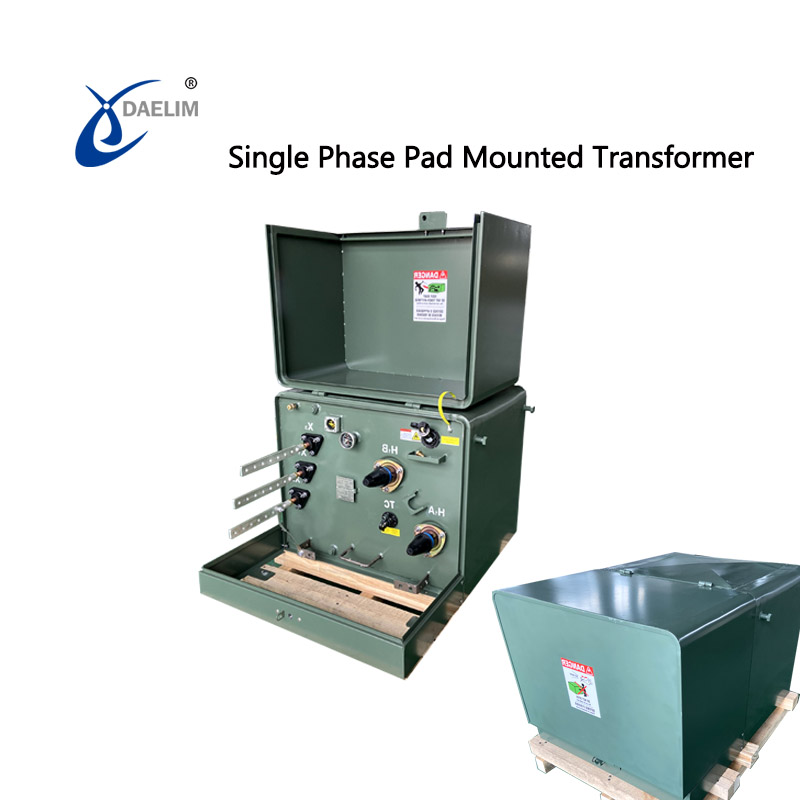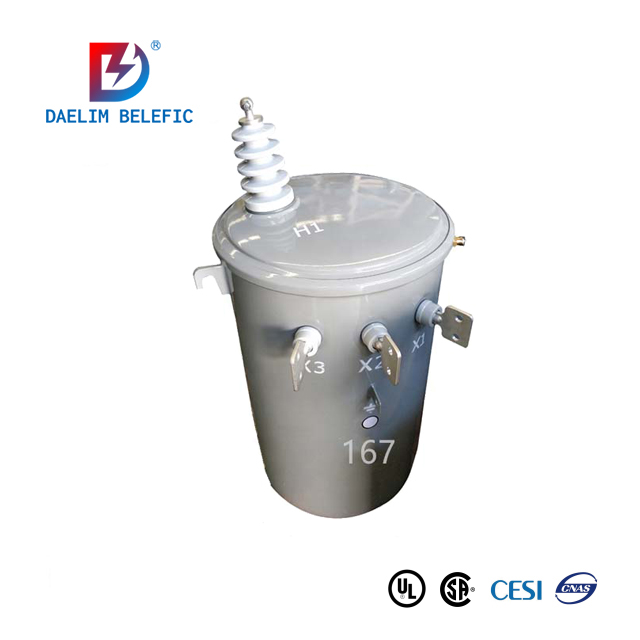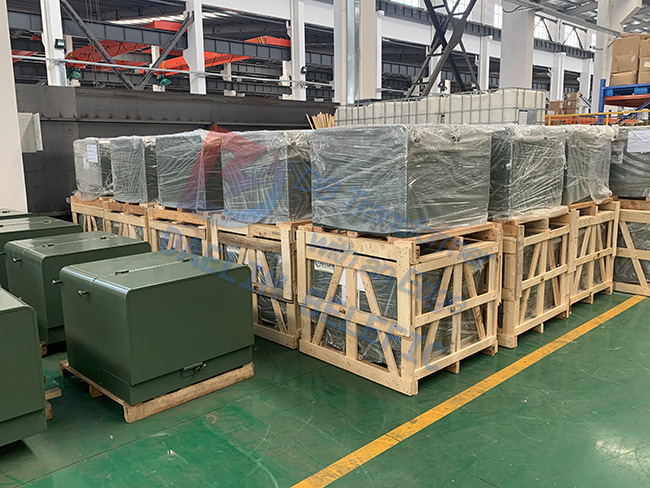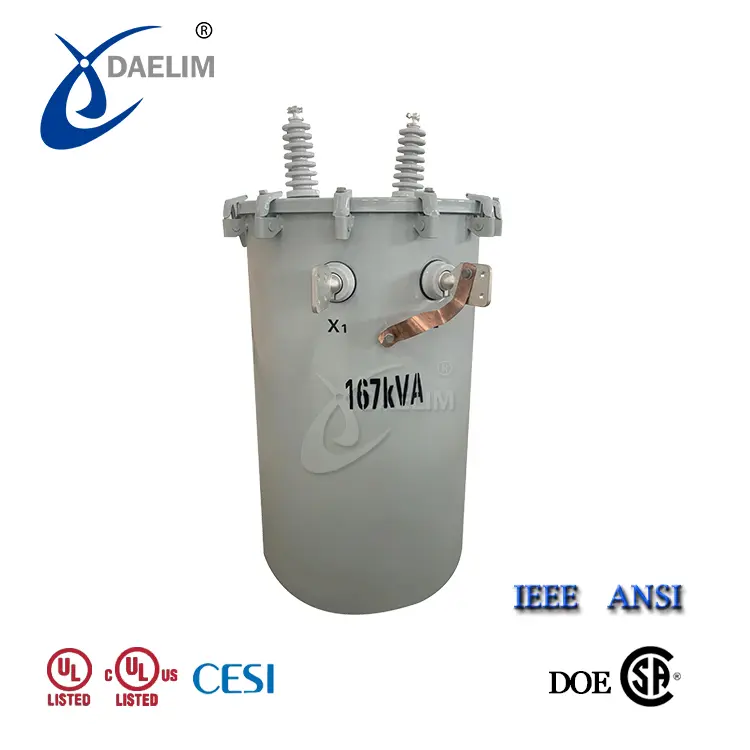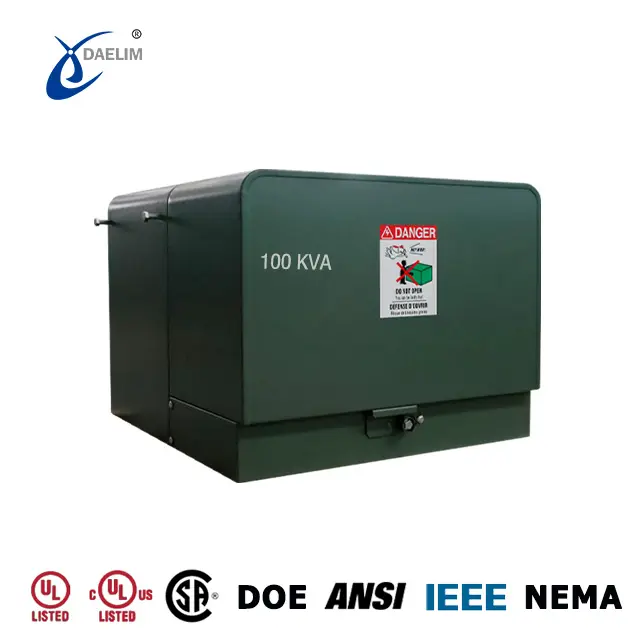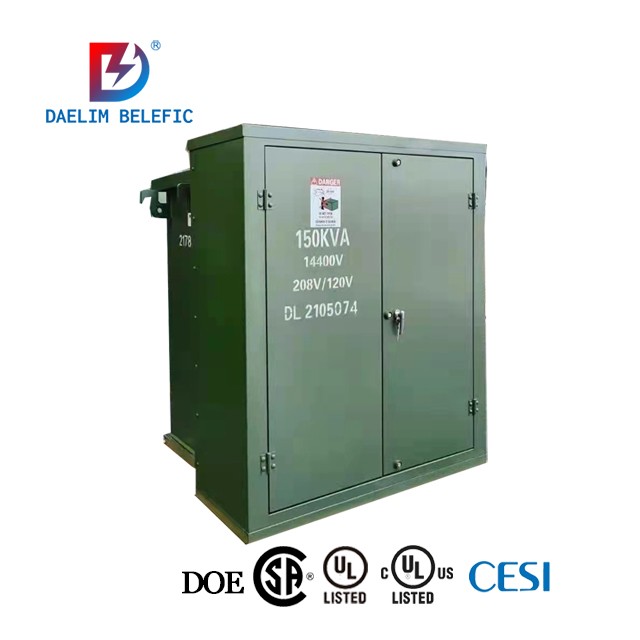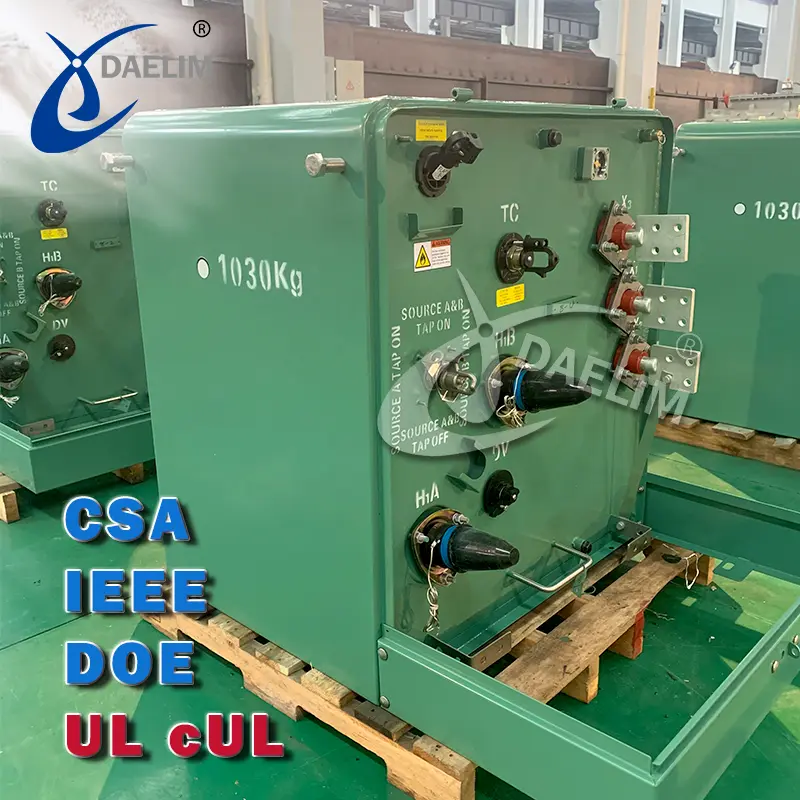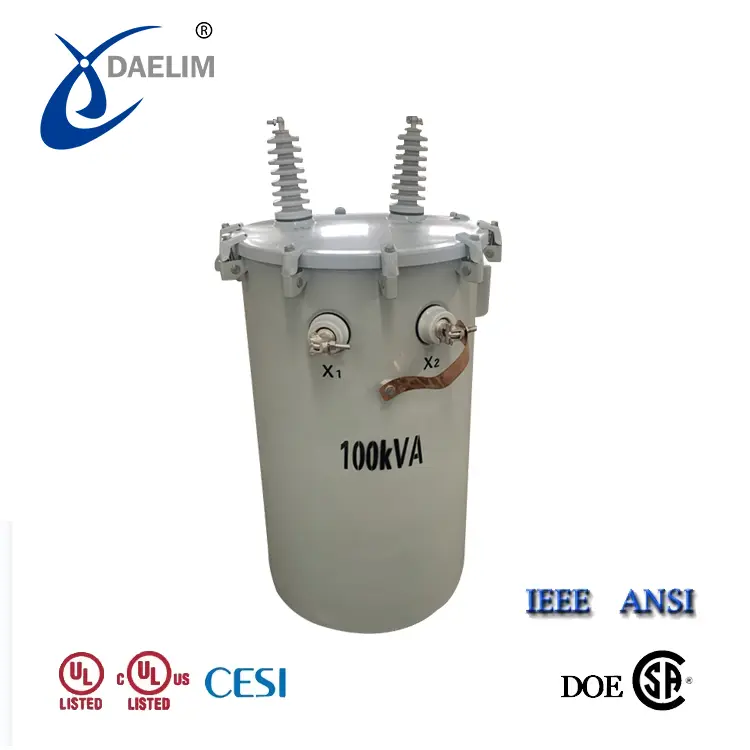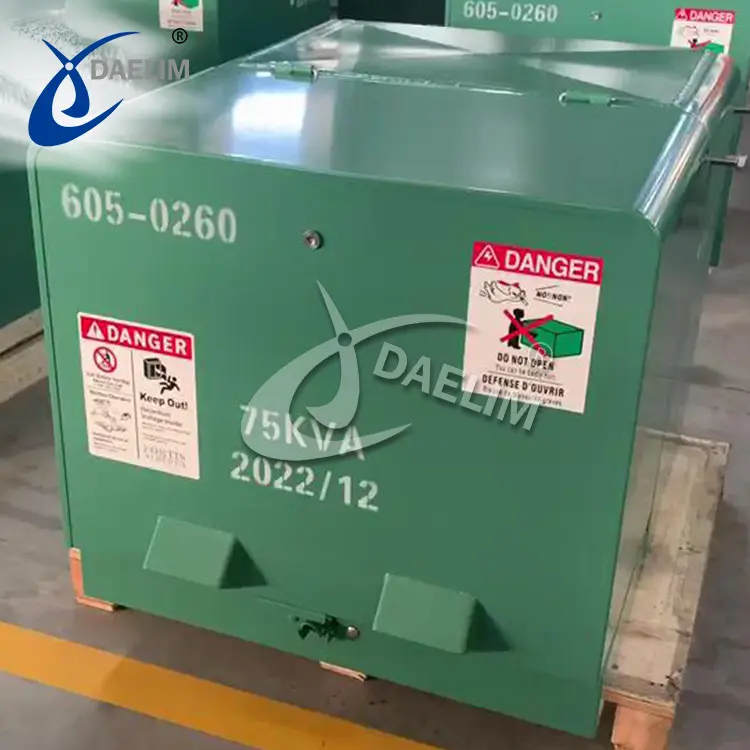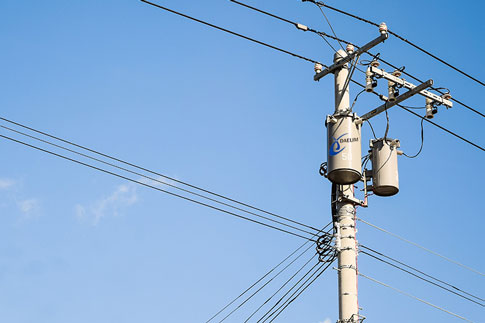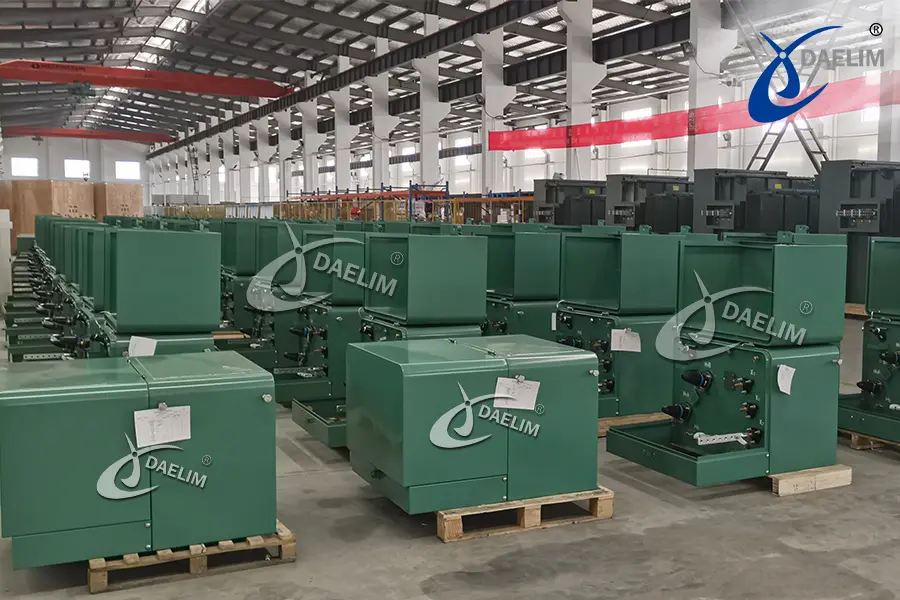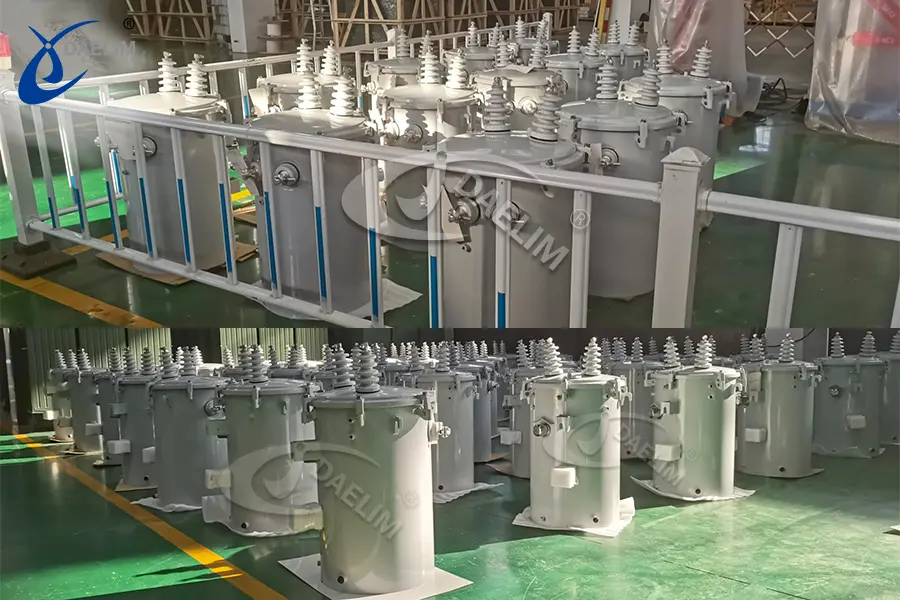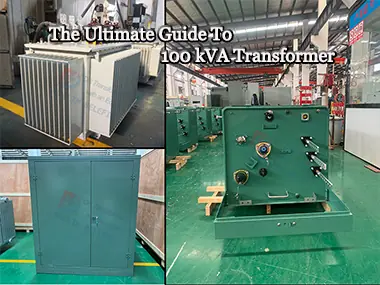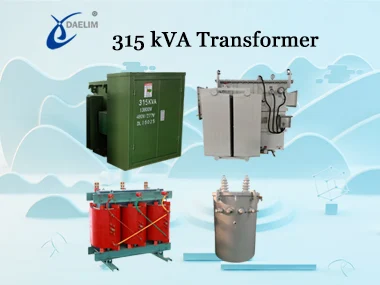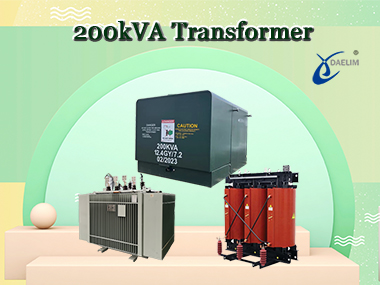The Ultimate FAQ Guide To 167 kVA Transformers
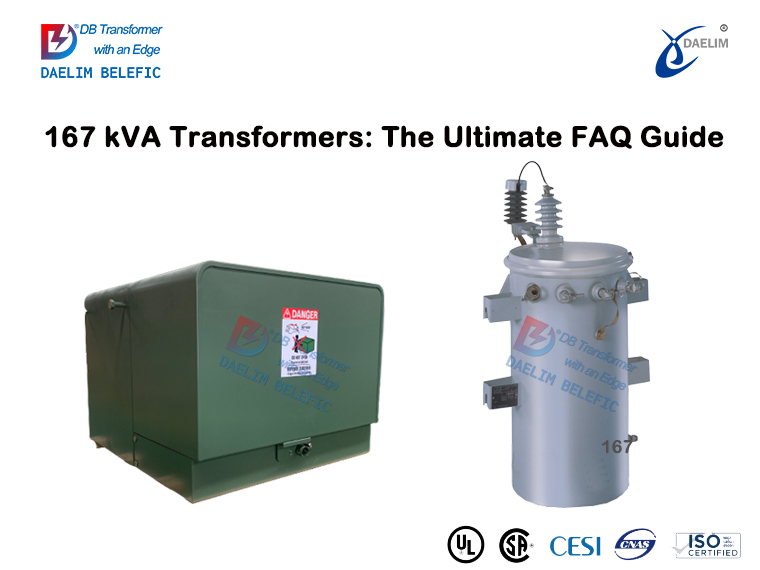
A 167 kVA transformer is a type of distribution transformer commonly used in various settings, including rural areas, single-family villas, and utilities. Distribution transformers are designed to step down higher voltage levels, typically ranging from 2.4 kV to 33 kV, to lower voltage levels suitable for domestic and commercial use. They are an essential component of electrical power distribution systems and are responsible for supplying electricity to individual consumers.
Daelim Transformer is a professional transformer supplier in China with UL/cUL, CSA, and other certificates. They have exported a large number of transformers to North America, South America, Australia, and other markets. Daelim Transformer is known for its good quality products and fast delivery, ensuring that they can meet your needs effectively.
Contact Daelim TransformerWhat Is A 167 kVA Transformer?
A 167 kVA transformer is a type of industrial transformer that reduces high-voltage, three-phase energy from the grid to safer, single-phase power.
This unit's low-temperature rise and high efficiency make it well-suited for use in several indoor and outdoor locations.
Such locations are electrical rooms, air-conditioned building spaces, underground vaults, and similar places.
Power Rating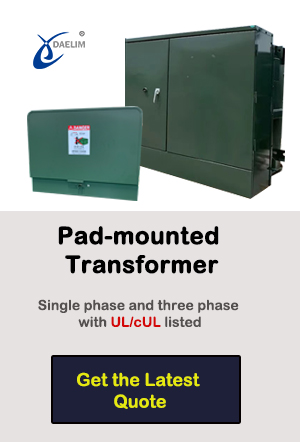
The transformer has a 167 kVA rating, meaning it can handle 167,000 V at 1,000 A.
Features and Specifications
There are three porcelain bushings on the secondary side of the 167 kVA transformer, and two on the main side to handle the high voltage.
The grain-oriented steel core of an overhead distribution transformer is generally enclosed with a single coil and split into two core loops.
Tin-plated terminals with either copper or aluminum are usually located on both the primary and secondary sides.
The 167 kVA transformer requires no additional fans or mounting brackets; Thus, it is usually cooled only by air.
The 65-degree Celsius temperature increase helps reduce heat loss, improve reliability, and extend the lifespan of this device.
Insulation Fluid
The use of insulating fluid in a 167 kVA transformer can vary depending on the specific design and requirements. Commonly, mineral oil is used as the insulating fluid due to its excellent electrical insulation properties and cost-effectiveness. However, there are alternative options available such as vegetable-based oils or synthetic oils, which may offer advantages such as improved environmental friendliness or enhanced fire safety.
As for Daelim Transformer they offer a selection of transformers, including single-phase pole-mounted and pad-mounted transformers. Single-phase pole-mounted transformers are typically used for residential applications where power is distributed through overhead lines. On the other hand, pad-mounted transformers are commonly used for commercial or industrial applications and are installed in ground-level enclosures for ease of access and maintenance.
Mount
The 167 kVA transformer often features a durable casing, which makes it suitable for use in challenging conditions. This robust casing helps protect the internal components of the transformer from external factors such as weather, dust, and other potential hazards, ensuring its reliable operation over an extended period.
To facilitate installation, the transformer is typically equipped with lifting lugs and hanging brackets. These features allow for easy and secure mounting on poles, simplifying the installation process. The lifting lugs provide attachment points for lifting equipment, making it convenient to transport and position the transformer during installation. The hanging brackets, on the other hand, aid in securely suspending the transformer on the pole, ensuring stability and proper alignment.
By incorporating lifting lugs and hanging brackets, the 167 kVA transformer enables efficient and hassle-free installation on poles, reducing the time and effort required for deployment.
Dimensions
The 167kVA transformer dimension is not large, because the capacity is not big. For the precise dimensions of the 167kVA transformer, you need to confirm with the supplier. The total mass of the 167 kVA transformer is about 1000 kg. Single phase pole mounted transformer is lighter than single pad mounted transformer.
In the table below, I list the dimensions of the 167kVA single-phase pole-mounted and pad-mounted transformer produced by Daelim for your reference.
| 167kVA single phase pole mounted transformer | |||||
| HV | LV | Length | Width | Height | Total Weight |
| 24940GrdY/14400 | 120/240V | 795mm | 890mm | 1335mm | 680kg |
| 167kVA single phase pole mounted transformer | |||||
| HV | LV | Length | Width | Height | Total Weight |
| 24940GrdY/14400 | 120/240V | 795mm | 890mm | 1335mm | 680kg |
To obtain the precise dimensions of the 167 kVA single-phase pole-mounted and 167kVA pad-mounted transformers from Daelim, it would be best to directly contact Daelim Transformer or refer to their product documentation, catalog, or website. They will be able to provide you with accurate and up-to-date information regarding the dimensions of their specific transformer models.
Benefits
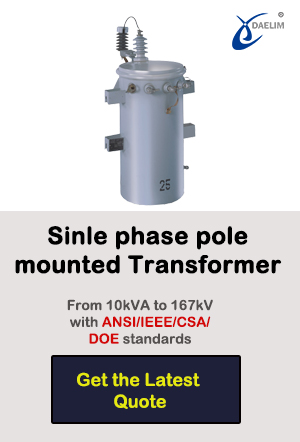
Efficient transformers not only last longer, but also reduce energy expenses and maintenance costs for their owners.
Applications
You can use a 167 kVA transformer in many different settings, including factories, steel mills, offshore, commercial, military, processing facilities, electric power distribution, utilities, and public areas.
Customization
There are no gauges for this transformer. However, you can install it with liquid level, temperature, and pressure/vacuum gauges if you need them.
Analog, hand-read gauges are by far the most common type for monitoring liquid levels, temperatures, and pressures/vacuums.
The 167 kVA transformer lacks surge protection devices too. Pre-drilled holes at the H1 and H2 primary terminals allow lightning arrestors.
This transformer does not have the safety precautions of circuit breakers or fuses.
We recommend making adjustments for blown fuses whenever possible, such as allowing for more regular oil changes.
What are the different types of 167 kVA transformers?
167 kVA Single Phase Pad-Mounted Transformers
Pad-mount, also known as the pad-mounted transformer is an electric ground-mounted energy distribution transformer within a locked steel cabinet, which is positioned on the concrete pad. Because all energized connections are safely enclosed within an enclosed metal structure that is grounded and a pad-mount transformer is able to be placed in areas that do not allow for a fence. Pad-mount transformers can be used conjunction in conjunction with underground electric power distribution lines that are located at service drops to lower the initial voltage of lines to lower voltages that are supplied to customers of the utility. A single transformer could be connected to one building or many houses. Single-phase pad-mounted transformers are available with power ratings ranging from 25 to about 250 kVA and typically include switches and fuses. The primary power cables are connected via elbow connectors that can be controlled by a Hot stick and allow for flexible repair and maintenance.
You may enjoy: How Much You Know For The Different Types Of Transformers?
What is the purpose of 167 kVA Pad-Mounted Transformers?
167kVA pad-mounted transformers, which are the large green utility boxes you see in the city are used for lower high voltage to the normal household voltage to power appliances, electronics as well as lighting. They aren't protected as overhead lines or substations are. While they might appear suitable for use as workbenches and climbing hurdles but electrical equipment could be a danger to those who come near it. Users should be aware and remain at an appropriate distance. United Power crews also need access to a safe area for repairs and maintenance. Obstacles, like fencing and landscaping, should be kept free from electrical devices. Although it is appealing to "camouflage" transformers by planting a garden remember that cooperative teams require a minimum of 10 feet of space at the front of a transformer mounted on a pad and four feet to the sides and rear that surround the house. This allows workers to work safely with the tools needed to work with equipment that is energized. This also gives crews the ability to maneuver without risk should any problems arise. In many of the newer residential developments and subdivisions pad-mounted transformers are increasingly common and, in many instances, are situated on property owned by the consumer. They are linked to primary high-voltage lines and secondary lines may extend from the transformer into various directions beneath the ground. Be aware of this when planting trees or trees, erecting fence posts or installing sprinkler systems, or digging in the vicinity of an electric transformer. It is recommended to call 811 prior to digging in order to make sure lines are in the right place to ensure your project does not interrupt utility service, and cause injury to a person or cause more harm.
Try for free: 3 Phase Pad Mounted Transformer
167 kVA Pole-mounted Transformers
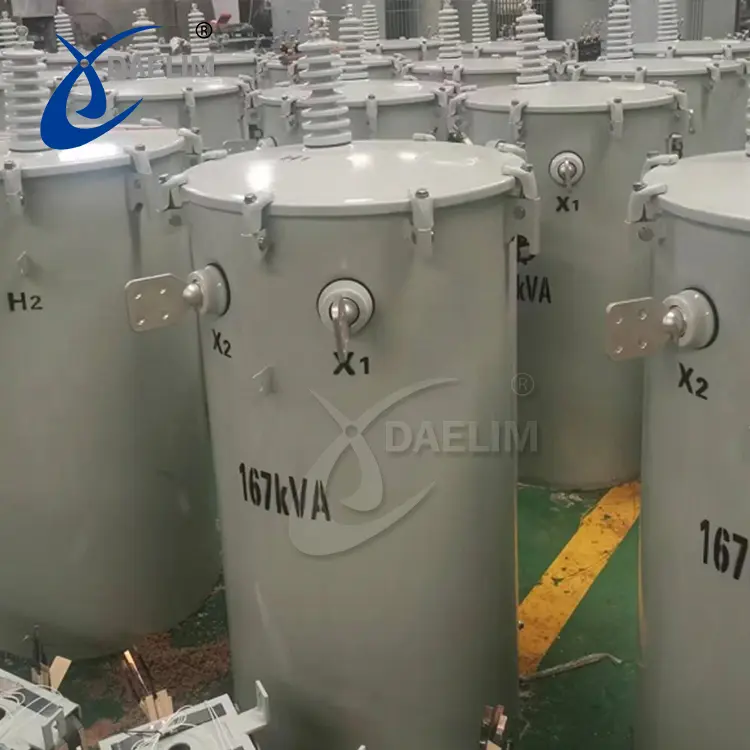 167 kVA Pole-mounted transformers are distribution transformers for electric utilities that are affixed to an electrical pole of service (wood or cement) and usually are placed at the same level as the overhead cables. Pole-mounted transformers are commonly used breadbox transformers utilized to convert distribution voltage to 120/240-volt power that is used in commercial and residential installations with low volumes. Pole-mounted electrical transformers can be found in large rural regions. They range between 16 kVA and 100kVA and convert 11,000-33,000 volts to a lower voltage of 400 volts. Pole-mounted transformers are relatively tiny in both size and mass making it easy to mount them on single-pole structures. They can also be installed on larger units and can be placed on two-pole structures which are approximately 5 meters high above the ground. The transformers are therefore not accessible which reduces the chance of injury to animals as well as individuals, as well as reducing the risk of vandalism. In extreme climate conditions and located in remote locations, reliability is built into the specifications of these electrical transformers. Tanks are designed to limit the accumulation of water as well as substances that cause corrosion. Protective coatings are put on tanks to stop corrosion. In the coastal regions, tanks are zinc-sprayed. In areas with high corrosive conditions, tanks are constructed from Stainless as well as 3CR12.
167 kVA Pole-mounted transformers are distribution transformers for electric utilities that are affixed to an electrical pole of service (wood or cement) and usually are placed at the same level as the overhead cables. Pole-mounted transformers are commonly used breadbox transformers utilized to convert distribution voltage to 120/240-volt power that is used in commercial and residential installations with low volumes. Pole-mounted electrical transformers can be found in large rural regions. They range between 16 kVA and 100kVA and convert 11,000-33,000 volts to a lower voltage of 400 volts. Pole-mounted transformers are relatively tiny in both size and mass making it easy to mount them on single-pole structures. They can also be installed on larger units and can be placed on two-pole structures which are approximately 5 meters high above the ground. The transformers are therefore not accessible which reduces the chance of injury to animals as well as individuals, as well as reducing the risk of vandalism. In extreme climate conditions and located in remote locations, reliability is built into the specifications of these electrical transformers. Tanks are designed to limit the accumulation of water as well as substances that cause corrosion. Protective coatings are put on tanks to stop corrosion. In the coastal regions, tanks are zinc-sprayed. In areas with high corrosive conditions, tanks are constructed from Stainless as well as 3CR12.
Keep reading: Single Phase Pole Mounted Transformer
167 kVA single-phase Transformer
A 167 kVA single-phase transformer works on single-phase power. It has two parts, magnetic and electric. The magnetic part of the transformer is made up of a magnetic iron core and the electric part is made up of a copper transformer. For more information about how a transformer is constructed, please read our article electric transformers.
Because direct current doesn't create an electromagnetic field, only alternating current can operate the transformer. The single-phase transformer does not have moving parts, so there is no mechanical friction. A single-phase transformer is highly efficient because there are very few energy losses.
An alternating current is a condition in which a transformer's primary wounding comes into contact with an electromagnetic field. This creates an alternating magnetic field. Through mutual induction, a part of the generated magnetic fields links with the secondary winding and produced a current. The secondary windings are inducible with the same frequency and voltage as the primary windings. Faraday's Law is able to determine the value for the induced voltage.
Read on: Tips for single-phase transformer
How many amps is a 167 kVA transformer good for?
| KVA | Voltage | Amps |
| 167 | 220 | 759.09 |
Keep reading: Do you want to learn more about a 34.5 kv transformer?
What are the Dimensions of a 167 kVA Transformer?
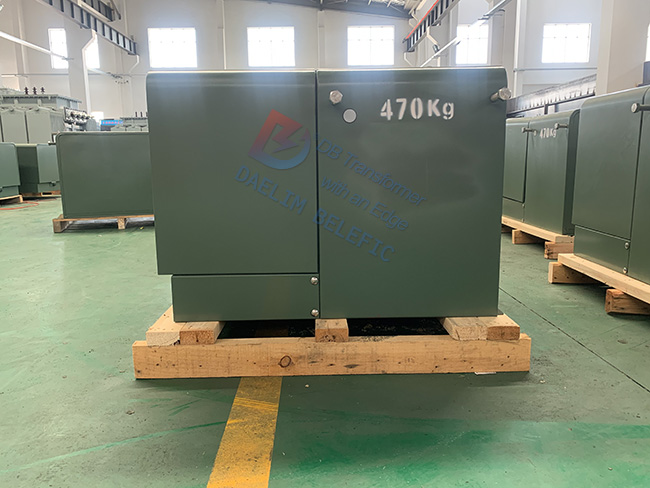
Specifications
| kVA | Height in inches (mm) | Weight in Pounds. (kg) |
| 167 | 58 (1473) | 1475 (670) |
| 250 | 66 (1676) | 1820 (826) |
| 333 | 62 (1575) | 2040 (926) |
| 500 | 66 (1677) | 2850 (1294) |
Keep reading: Knowing More about A Pad Transformer
How much is the 167 kVA transformer?
The single Phase Transformer price for 167 kVA is around $500-$1,200 per piece.
Pad Mount Transformer price for 167 kVA is $1000 -$1500 per piece.
Pole Mounted Transformer price for 167 kVA is $500-$1000 per piece.
The transformer prices given above are a rough range. If you need a specific quotation, you need to provide detailed technical parameters or specific requirements documents to the Daelim team, Daelim will give you feedback quickly.
Check Daelim's international transformer projects.
What Is A 125 kVA Transformer?
Generally, distribution loads and seismic safety were mainly taken into account when developing the 125 kVA transformer's design.
In addition, the 125 kVA transformer is efficient and cost-effective. It has reduced heat production which lessens the need for cooling.
Power Ratings
The transformer's ability to handle 125,000 V is typically shown by its 125 kVA rating.
Features and Specifications
125 kVA transformer has an enclosure that makes the device waterproof and suitable for outdoor use.
The cores of its components are generally constructed from durable, time-tested cold-rolled silicon steel laminations.
Moreover, the insulation of this 125 kVA distribution transformer is good up to 220 degrees Celsius, and can handle an increase in temperature of up to 150 degrees Celsius.
Dimension
The 167 kVA transformer weighs a total of 970 pounds (416 kg). It is towering 30 inches tall.
Benefits
125 kVA transformer may be specially made more efficient by the use of aluminum winding material that has been meticulously cut.
Each core is separately coated to protect it from moisture, and they are also electrically balanced to reduce axial strains in the case of short circuits.
125 kVA transformer is not only eco-friendly but also offers substantial cost savings to its owners.
This includes a longer lifespan and a reduced total cost upon purchase.
In most cases, the mounting brackets for the floor and walls are already attached to 125 kVA transformers.
So power tools may be mainly used to speed up the installation process.
Safety
The isolation design of the 125 kVA transformer makes it less dangerous for workers to handle than standard transformers.
In addition to rerouting power between two distinct circuits, a 125 kVA transformer may help minimize electrical noise in sensitive equipment.
In this case, the three components—the powered gadget, the primary power source, and the backup power source—are kept in their compartments.
Application
Applications for 125 kVA power transformers include the safe and dependable operation of CNC machines, computers, medical equipment, and laboratory instruments.
Try for free: Transformer Solutions For Utilities
What Is The Importance Of Determining The Power Rating Of 167 kVA Transformers?
Companies who want to get the most out of their transformers should learn their maximum power rating.
Therefore, a transformer's rating will reveal this information.
In most cases, electrical components always conform to a quality standard. It explains how you're supposed to make use of the device.
The rating of a 167 kVA transformer takes into account several factors, such as the range of acceptable voltages for use.
As a result, the rating of a transformer is significant because it indicates the safest operating conditions for the device.
Ultimately, the rating is especially important in establishing whether or not there is a risk of electrocution or fire when dealing with mains supply transformers.
Daelim Is the Top Supplier of 167 kVA Transformers
If you're looking for a reliable manufacturer of 167 kVA transformers, please contact Daelim Transformer.
They also offer medium voltage transformers with power ratings of 125 kVA transformer, 115 kVA transformer, 112 kVA transformer and 175 kVA transformer.
We will assist you with each of the transformer's features, power values, applications, and benefits necessary to fit your needs.
Related Products
Related Article
Single Phase Pole Mounted Transformer Project, Canada
Used in Saskatoon, Canada, 2019. We provided single phase transformers of 2.4kv, 7.,2kv, 13.8kv and 14.4kv. They are used for remote village net work.
Supply of 37.5 kVA Single Phase Pad Mounted Transformers for Canadian Utility
Today, we are excited to introduce a project undertaken by Daelim Transformer aimed at supplying transformers to a Canadian utility. This project involves the delivery of 80 units of 37.5 kVA single-phase pad mounted transformers, specially designed to meet the utility's requirements. With a high voltage (HV) rating of 24940GRDY/14400 V and a low voltage (LV) rating of 240/120 V, these transformers are vital components in the utility's infrastructure.
Single Phase Pole Mounted Transformer For Guyana
In August 2023, Daelim Transformer completed production and Factory Acceptance Testing (FAT) for a batch of single-phase pole-mounted transformers. These transformers are destined for a prominent distributor in Guyana. The customized order comprises 44 units transformers, with 32 units of 50 kVA, 6 units of 100 kVA, and 6 units of 167 kVA. All adhere to traditional design principles, featuring dual high-pressure bushings. The standard manufacturing and testing procedures follow IEEE Std C57, with the specified type as Conventional.
The Ultimate Guide To 100 kVA Transformer
Daelim’s transformers with Ul/Cul, CSA, CESI, ISO and other certificates. The design and production standards are completely consistent and exceeded ANSI/IEEE, CSA, DOE, IEC, AS, GOST, EN, etc. Exit thousands of 100 kVA transformers each year to North America, South America, Europe and other regions.And according to customers’ needs, Daelim give the most cost-efficient solutions.
A Complete Access To 315 kVA Transformer
This post will teach you everything you need about the 315 kVA transformer. If you're in the market for a 315kVA transformer, use this guide to identify its features and specifications.
An Encyclopedia of 200 kVA Transformer
Dealim Electric has designed, produced, and tested all kinds of 200 kVA transformers and exports to U.S. and Canada with the CSA, ANSI/IEEE standards. 200 kVA transformers are the only rated capacity manufactured by Daelim, we can also provide other rated capacity transformers.

